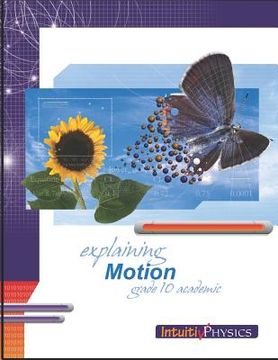Explaining Motion: Student Exercises and Teacher Guide for Grade Ten Academic Science (en Inglés)
Reseña del libro "Explaining Motion: Student Exercises and Teacher Guide for Grade Ten Academic Science (en Inglés)"
Understanding motion is difficult... no longer!Perhaps you remember the approach you experienced in high school. It started with time, distance and mass, three concepts that took thousands of years for the best minds in humanity to finally sort out. IntuitivPhysics re-presents this traditionally difficult material using three simple diagrams that work with, not against, students' experience of motion.For example, your child sees a soccer ball lying motionless, and gives the ball a kick toward a friend. The ball moves smoothly toward the friend, who stops the ball with another nudge, leaving the ball motionless once again. We will study four aspects of that motion over four weeks.Students will learn to draw velocity: time graphs, an idea that teenagers find easy to understand. Then we learn to analyze that graph for displacement and acceleration. Students will calculate distance (displacement) as the area under a v: t graph. And of course acceleration is the slope of the v: t graph.In their muscles, bones, tendons and nerves, children have a natural intuitive understanding of impulse, the ooomph! that gets a ball moving or stopping. We will make the most of their intuitive understanding: this Ooomph! is known to physicists as Δp, (change in momentum). Forces are present whenever momentum is exchanged. We will make use of the v: t graph and the concept of impulse to develop a simple model of force. This brief treatment of force is only enough to explain the events that the students are studying.Motion in 2 dimensions brings the student to a more realistic portrayal of moving objects in sports. Momentum offers the most effective subject for beginners to learn about vectors.Every two-page pencil-and-paper student exercise has its own two-page parent / teacher guide, to help you teach your child. Your student will investigate the motions of bicycles, soccer balls, and their own bodies in everyday play, using diagrams. All your child needs is a pencil, some paper, and basic addition, subtraction multiplication and division. No algebra!

